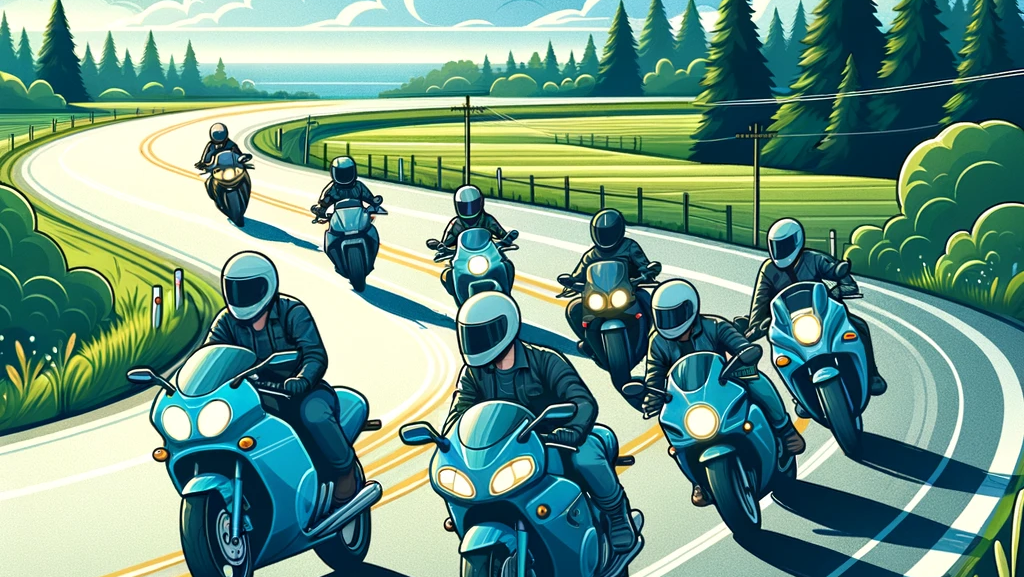Cornering on a motorbike can be one of the most exhilarating yet intimidating aspects of riding. But, with the right techniques and a bit of practice, you can handle corners with confidence and finesse. In this guide, we’ll explore essential tips and techniques to help you corner like a pro, enhancing both your safety and enjoyment on the road.
Introduction
If you’ve ever felt a twinge of anxiety when approaching a sharp bend on your motorbike, you’re not alone. Many riders, both new and experienced, find cornering to be a challenging part of motorcycling. However, mastering this skill can significantly boost your confidence and overall riding experience. Let’s dive into the key elements of cornering with confidence.
The Basics of Cornering
Before we get into the nitty-gritty, let’s cover some fundamental concepts. Cornering involves a combination of speed control, body positioning, and understanding your bike’s capabilities. Here’s a breakdown:
- Speed Control: Entering a corner at the correct speed is crucial. Too fast, and you risk losing control; too slow, and you can’t lean properly. The golden rule is to slow down before the corner, not in it.
- Body Positioning: Your body position affects the bike’s balance. Lean with the bike, keep your inside arm relaxed, and look through the turn.
- Throttle Control: Smooth throttle control helps maintain stability. Roll on the throttle as you exit the corner to straighten up and accelerate out.
Preparing for the Turn
Preparation is key to cornering with confidence. Here’s what you need to do before you even start to lean into that turn:
- Assess the Road: Look ahead and evaluate the turn. Check for debris, potholes, and the sharpness of the bend.
- Brake Before the Turn: Use both brakes to slow down to a manageable speed. Once you’re in the turn, avoid heavy braking as it can destabilize the bike.
- Choose Your Line: Aim for a smooth, predictable line through the corner. This usually means entering wide, hitting the apex (the middle of the turn), and exiting wide.
Executing the Turn
Now, let’s get into the mechanics of actually making the turn:
- Look Where You Want to Go: Your bike follows your eyes. Keep your gaze fixed on where you want to go, not where you are.
- Lean with the Bike: Depending on the speed and sharpness of the turn, you might need to lean your body into the turn. Your shoulders should align with the handlebars.
- Maintain a Steady Throttle: As you lean, keep a steady throttle. This helps maintain balance. Gradually increase the throttle as you start to straighten up.
Advanced Techniques
Once you’re comfortable with the basics, you can start incorporating some advanced techniques:
- Countersteering: This is the process of pushing the handlebars in the opposite direction of where you want to go. For example, to turn left, you push the left handlebar away from you. This helps initiate the lean more effectively.
- Trail Braking: This involves braking gently into the corner and then gradually releasing the brake as you lean. It helps manage speed and improve control.
- Body Shifting: For sharper turns or higher speeds, shift your body weight more aggressively. Move your hips to the inside of the turn and keep your torso upright to maintain balance.
Common Mistakes and How to Avoid Them
Even seasoned riders can make mistakes. Here are some common pitfalls and how to avoid them:
- Entering Too Fast: Always slow down before the turn. Practice makes perfect.
- Poor Line Choice: Plan your line and stick to it. Avoid sudden changes in direction.
- Target Fixation: Don’t stare at obstacles or the edge of the road. Focus on the exit of the turn.
Safety Tips
Safety should always be your top priority. Here are some tips to keep in mind:
- Wear Proper Gear: Always wear a helmet, gloves, and protective clothing.
- Regular Bike Maintenance: Ensure your bike is in good condition, with properly inflated tires and functioning brakes.
- Ride Within Your Limits: Don’t push beyond your comfort zone, especially on unfamiliar roads.
Conclusion
Cornering a motorbike with confidence takes practice and patience, but it’s a rewarding skill that can enhance your riding experience. By focusing on speed control, body positioning, and throttle management, you can tackle any turn with ease. Remember, safety first, and enjoy the ride!

